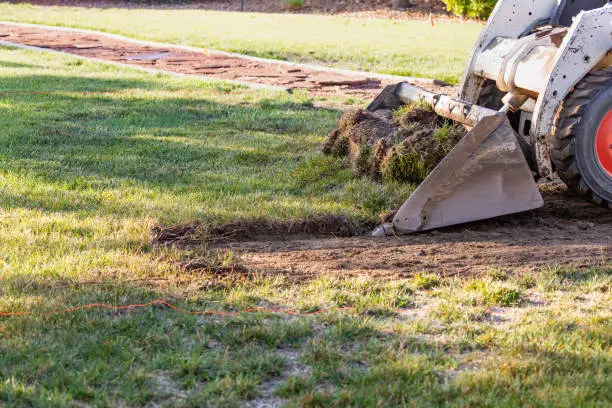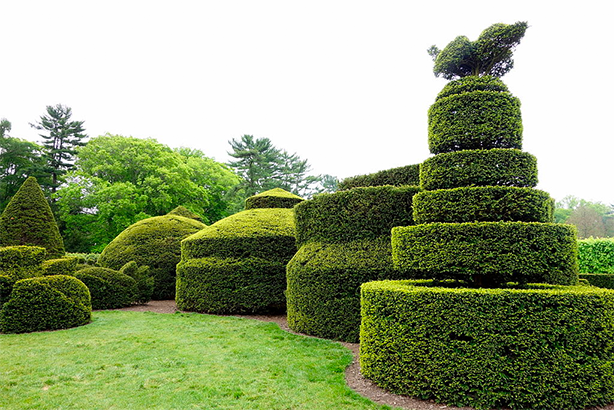Yard Grading: Boost Your Home’s Appeal and Protect It from Water Damage

Yard grading is one of those home improvement projects that doesn’t immediately come to mind but plays a significant role in both the aesthetics and functionality of your property. Grading your yard correctly is crucial for preventing water damage, reducing soil erosion, and enhancing the visual appeal of your home.
What is Yard Grading?
Yard grading refers to the process of leveling the ground around a property or shaping it into a slight slope. This procedure is designed to direct water away from your home’s foundation, eliminating the risk of water damage and foundation issues. Moreover, a well-graded yard presents an even, aesthetic appeal, which can significantly increase your home’s curb appeal.
Why is Yard Grading Important?
Proper yard grading is essential for numerous reasons:
Prevents Water Damage
The primary purpose of yard grading is to protect your home from water damage. Without adequate grading, rainwater and runoff can pool around your home’s foundation, causing a multitude of problems like mold, basement flooding, and even foundation cracks.
Promotes Healthy Landscaping
Yard grading is vital for promoting healthy plant growth. Excessive water can drown plants and create soggy spots in your yard, while insufficient water can lead to dry and barren areas.
Enhances Home Value
A well-maintained, properly graded yard can significantly enhance your property’s value. It improves your home’s appearance, reducing the risk of foundational issues, and making it more appealing to potential buyers.
How to Grade Your Yard
While yard grading can be a DIY project for some homeowners, it often requires a professional’s expertise due to the potential complications. Here’s a simplified step-by-step process:
- Assess the Landscape: Determine where water accumulates in your yard after a rainfall. Identify the low spots and high spots.
- Plan the Slope: The slope should ideally be directed away from your home. Aim for a slope of about 1 to 3 percent, i.e., a 1- to 3-foot drop for every 100 feet.
- Excavate: Remove grass, plants, and obstacles from the grading area. Ensure the soil is dry before you begin.
- Grade: Use a large landscaping rake to shape the yard into the desired slope.
- Compact the Soil: Use a lawn roller to compact the soil. This prevents future settling.
- Replant and Mulch: Once grading is done, replant your grass and apply mulch to protect the soil.
Potential Challenges and How to Overcome Them
Although yard grading may seem straightforward, several challenges could arise during the process. Being aware of these and knowing how to navigate them will ensure you enjoy a beautifully graded yard that functions as it should. Here are some common issues:
Undulating Landscape
Some yards have a naturally uneven landscape with peaks and troughs. The grading process in such yards may be more challenging and time-consuming. Utilize proper tools like a landscaping rake or a bobcat for larger yards, or consider hiring professionals.
Heavy Rainfall
If you live in an area prone to heavy rainfall, the process can be disrupted. To avoid complications, monitor the weather forecast closely and choose dry days for the job.
Underground Utilities
Always check for underground utilities before you start excavating. Hitting a water line or a gas pipe can lead to significant problems. You can call the national “Call Before You Dig” number (811 in the U.S.) to have the location of utilities marked out for you.
Large Rocks and Roots
You may encounter large rocks or stubborn roots while excavating. These might need to be manually removed or cut, adding to the effort and time of the project.
Having covered these potential challenges, it is evident that yard grading can be labor-intensive. However, the end results justify the hard work. A well-graded yard enhances your outdoor space aesthetically, while also maintaining the structural integrity of your home.
The DIY Route or Hiring a Professional?
The decision to DIY or hire a professional for yard grading often depends on the yard size, your budget, and your confidence in handling the task.
If you choose the DIY route, remember to take safety precautions, like wearing sturdy shoes, gloves, and safety goggles. Equip yourself with the necessary tools and don’t rush the process; grading needs to be done carefully for it to be effective.
However, if your yard is large or has a complex landscape, hiring a professional grading contractor can be a wise decision. They have the skills, tools, and experience to ensure the job is done correctly and efficiently. Yes, it will be more costly than doing it yourself, but it could save you from expensive repairs in the future.
Conclusion
Undertaking a yard grading project may require careful consideration of several factors, such as the existing grade, size of the entire yard measured in square foot, and the steepness of the slope. You may need to acquire fill dirt, measured in cubic yards, or construct a retaining wall to ensure proper drainage, particularly if your property faces significant drainage issues. The average land grading cost may vary depending on these factors, and additional costs such as purchasing grass seed for yard leveling after grading should also be factored in.
While landscape grading may seem like a substantial investment, it’s essential to remember the potential long-term cost savings. By ensuring proper grading, you can prevent water damage to your home, saving you potentially thousands in repairs. Furthermore, the aesthetic appeal added by a well-graded yard can significantly boost your property value.
In essence, despite the initial grading costs, proper yard grading is an investment worth making. It protects your home, enhances your property’s appearance, and can prevent further expenses down the line. With the correct knowledge and preparation, you can transform your landscape, regardless of the steep slope or the size of your yard.







